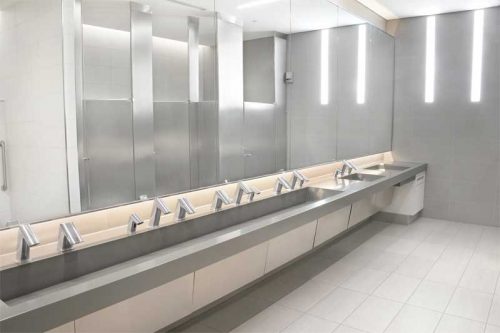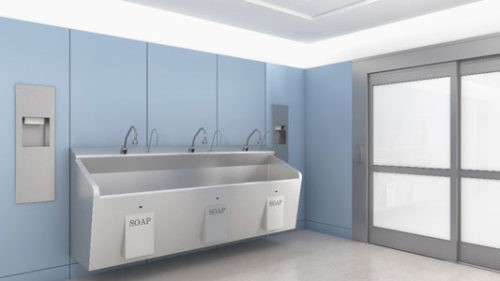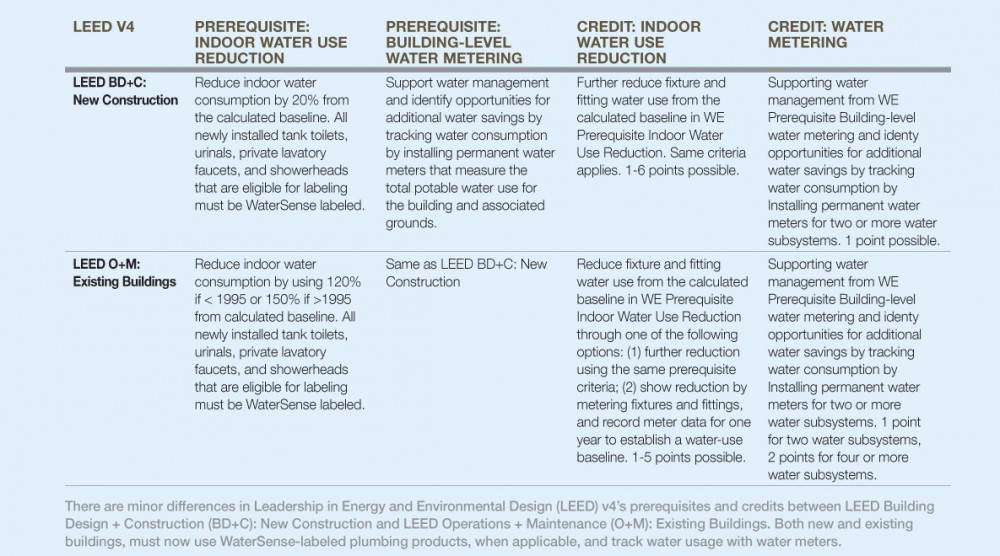With the COVID-19 pandemic creating a heightened sensitivity to proper hand sanitation, it is more important than ever to implement solutions that mitigate potential health risks in public environments. When one takes into account the fact thousands of users go in and out of public restrooms each day, ‘high-touch’ faucet and flushometer handles can be breeding grounds for bacteria. To combat these concerns, touch-free products—from motion-activated door sensors and light switches to touch-free faucets and flushometers—are being installed across all areas of the commercial restroom.
|
Healthcare-acquired infections (HAIs) occur in every type of healthcare facility and can be spread in various ways. These infections are caused by a number of microorganisms, including bacteria, fungi, and viruses. Hospital water systems and bathrooms can be ideal places for germs to breed. However, through smart restroom design and strategic specification of fixtures, healthcare facilities can minimize the spread of infection-causing pathogens.
|
Goals such as increasing a facility’s sustainability take a different spin for new construction and renovation projects. Although any building—new or existing—can strive for Leadership in Energy and Environmental Design (LEED) certification, the approaches to feasibly achieve that goal change based on the building.
|
Whether a developer is constructing a new facility, or an owner wants to update an existing building, plumbing choices come into play. Yet, the plumbing decisions for new construction versus renovation can be different based on priorities, objectives, and practicalities.
|
|
|







